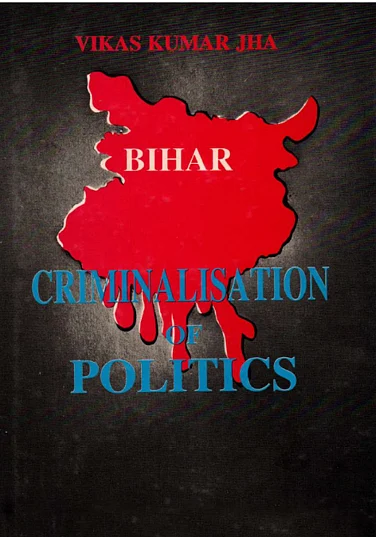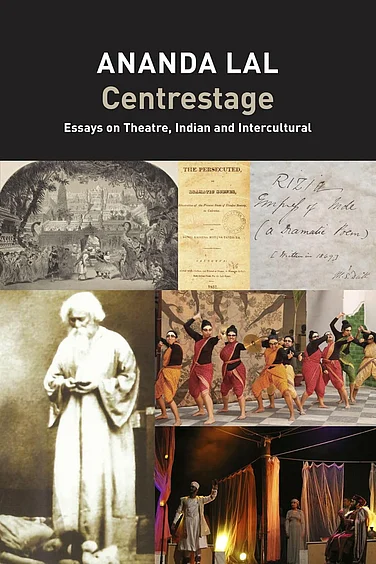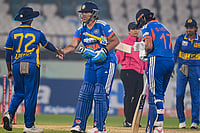Traduttore, traditore. ‘The translator is the traitor’, they say in Italian. Such was the distrust and paranoia in Europe for translations that the scholar-linguist William Tyndale was executed in 1536 for “heresy” he had committed by translating the New Testament into English. The sacred couldn’t be converted into a lesser language. A decade later, legendary French translator Etienne Dolet was executed for what they believed was a wrong translation of Plato and all his works were burnt along with him. Five centuries later, an Indian author has won a major literary award and shared it with her American translator, making it an apt occasion to discuss the status of translation in world literature and the role translations play in canonising a text, as well as becoming a cultural mediator between the two languages.
On the surface, translations help spread the knowledge of one language to the other. They enrich the target language and enable the source language to reach a larger audience. But which works get translated, in which languages and under whose pen are the questions that play a determinant role in the text’s journey. A translation into a politically and economically weaker language will not help the text in the way a translation into a language of power does. A translation of an English novel into Hindi or Marathi will take it to the speakers of these languages, but the original novel doesn’t need any validation or critical acclaim, much less any international award from these languages. Whereas the translation of a Hindi novel in French and its publication in Paris, or its translation in English and the publication in the UK catapults it to the world stage. One may resent it, but that’s the reality. Before the English translation of Geetanjali Shree’s Ret Samadhi appeared in the UK, its French translation, Au-delà De La Frontière, had been published in Paris and was shortlisted for a major award.

Pascale Casanova in her seminal work, The World Republic of Letters, gives a vivid account of how Paris came to be anointed as the literary capital of the world and how translations into French gave writers a new identity. Consider James Joyce’s influential French translator Valery Larbaud who “managed to rescue him from an invincible provincialism” and universalised the chronicler of Dublin. Even Latin American writers arrived at the international literary circuit mostly through their translation into French and their recognition by French critics.
***
Long before translations became a tool for disseminating literature, they helped the spread of religions to different and distant shores. It was the great Buddhist scholar Kumarajiva who translated several Buddhist scriptures from Sanskrit into Chinese, and was singularly instrumental for the spread of the religion and its philosophy in China and East Asia. After initial apprehensions, the Bible eventually came to be translated into some 2,400 languages and became an integral part of the Western conquest of Asia and Africa and South America. It is now the most widely-translated text in human history. In his essay, Translating the Sacred, Robert Barnes underlines that it was made possible “mainly because Christians believe that the message of the Bible can be presented in any language”. Whereas, while the Quran has also been translated into many languages, “Muslims regard these translations as no more than aids to understanding the original Arabic, which is the only text regarded as inspired”.

What has been the situation in India? Indians have been effortlessly rendering their religious texts into multiple languages spoken across the country. The many Ramayanas and the Mahabharatas written in several Indian languages over the last two millenniums were marked by endless variations. Not only was there no single holy book, there was also no singular version of the religious texts. Around the time European scholars were being executed for rendering the holy word into lesser languages, Tulsidas deliberately discarded the ‘god’s language’, Sanskrit, and chose the regional Awadhi to write Ramcharitmanas, a text that soon reached millions of households in North India. Mughal rulers commissioned the translations of a range of Sanskrit texts into Persian. Akbar even set up Maktab Khana, the House of Translations, wherein he invited a range of translators and illustrators to render Sanskrit texts into Persian.

However, while the Mughal’s exercise was of a deliberate translation, a fixed and certain text, the others were retellings, essentially variations on the existing tales. “Despite the presence of many languages, there was in India no ‘translation’ in the Western sense throughout the first 3,000 years of its literary history, until the colonial impact in the 19th century. This was for the good reason that literary production in India was seen as a collaborative and collective activity with little value placed on either individuality or originality,” says literary scholar Harish Trivedi.

To learn how the tradition still continues one can visit the Vaishnavite monastery, Auniati Satra, in Majuli, the great riverine island on the Brahmaputra. Monks here study and work on old texts and manuscripts. A plaque at the monastery has a Sanskrit shloka inscribed in the Assamese language: “Whatever I write may be wrong because even Bhima was defeated in a battle.” The shloka appears at the end of several Sanskrit texts as an apology by the anonymous manuscript-copier, a humble admission of his fallibility that he might have committed several mistakes in copying and thus deviated from the ‘original’ text. It explained why there was rarely a single version of several ancient and medieval texts, which passed through one generation to the other through diligent copiers, and even the greatest copier couldn’t have easily offered a ‘true’ facsimile. But the shloka could also be a narrative device to add a layer of ambiguity in the text and complicate its reading and receptions, and it could also reflect a desire of the anonymous copier to leave his fingerprints on the text. Many centuries later, Umberto Eco’s narrator in The Name of The Rose inserted a similar admission in the foreword of the manuscript that he had found and later copied.
Also, there are several words in Indian languages for translation, and several languages have more than one word, used fairly interchangeably, which in a way is a reflection of the nation’s composite literature and philosophy, unlike in English where the word translation seems to have no synonym. The Indian retellings can be best explained through the example of Tulsidas who asserted in the beginning of the Ramcharitmanas that he has composed this text “for his own pleasure”. It contrasts sharply with, Trivedi says, “the translations of the Bible into the numerous languages of the world which were nearly all undertaken to serve the wider God-ordained mission of converting the heathens”.
***
Translations also shape an author’s afterlife and help create a cult, with Franz Kafka being the biggest instance. And translations also enable the translator to understand the nuances of both the languages. A translator often undertakes a long and excruciating search for an accurate word that aptly captures the sentiment in the source language. French novelist Gustave Flaubert wrote about his long struggle to find the correct word for the emotion brewing within him. The struggle of a translator is perhaps more arduous. A brilliant word lies before you but you are unable to find its exact replica. You ask friends, consult dictionaries, but there’s no such word—and then you invent one before erupting in joy.

The first text I translated was Kafka’s short story Hunger Artist. It was at the suggestion of my editor-friend Piyush Daiya who had rejected my first novella, saying that I should first attempt translations to learn the “music of words”. In my early 20s then, I spent a full year translating various texts, ranging from essays by modern artists, musicologists to a long extract from Ramchandra Gandhi’s Svaraj, a book-length meditation on Tyeb Mehta’s painting Shantiniketan Triptych. Some writers routinely take a stab at translations in order to have an intense duel with languages. It makes them aware of the hidden sounds and alphabets of their own language, else one is prone to commit blunders; none bigger than the person who published Chekhov’s masterpiece The Lady with the Dog in Hindi as Kutte Wali Mahila.
***
One can end with the hope and excitement the International Booker has brought to India. It is being said that the award will open a global window to books in Hindi, as well as in Indian languages. Pray for this, but do note that Rabindranath Tagore lived for three decades after receiving the Nobel. He was a towering novelist, poet, musicologist, painter, thinker, public intellectual, a leading figure of the freedom movement. He was friends with some of the most powerful Indians and had a considerable global following. And yet, the Nobel could secure little space for his Bengali language at the global stage. The next Bengali text that received wide recognition in the West came several decades later—Mahasweta Devi’s short story Draupadi, which perhaps wouldn’t have been possible without the signature of Gayatri Chakravorty Spivak, a towering presence in the Western academy. Spivak, who had also rendered Derrida’s Of Grammatology into English, translated and took Draupadi to the world. The other Bengali novelist, Amitav Ghosh, with a global presence chose English as the language of creation.

Before it reaches the world podium, Hindi faces an ongoing tussle with various Indian languages, besides the mighty hurdle from Indian English writers, who rarely seem willing to offer any space to Indian languages. In 1997, Salman Rushdie co-edited a ‘definitive’ and influential volume of Indian writing since Independence. Except a short story each by Satyajit Ray and Manto, all the works were by Indian English writers. Languages other than English, used by over a billion people, got 22 pages out of 600 or 3.6 per cent of the book. Twenty-five years later, as we celebrate Geetanjali’s award, a 908-page tome celebrating Indian poetry has appeared. Not a single poet from any Indian language in this book that pompously calls itself The Penguin Book of Indian Poets.
(This appeared in the print edition as "Art of the Traitor")


























